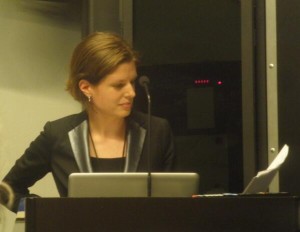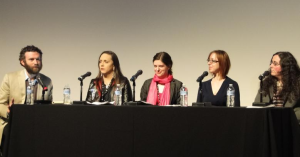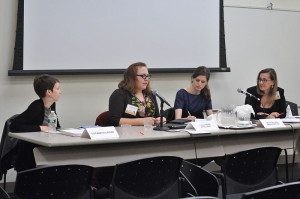Blog
Presentations
Recent:
2014 Experience Music Project Pop Conference
Go! Music and Mobility
EMP Museum, Seattle, Washington
24-27 April 2014
Wanda Jackson Goes to Japan: The Hidden Histories of “Fujiyama Mama”
Sometimes a piece of music goes mobile because it seems to belong to a time or place other than its own. Such is the case with “Fujiyama Mama,” an R&B number written by Jack Hammer in 1954 and most famously recorded by Wanda Jackson in 1957. The song, in which the protagonist compares herself to a sexually charged atom bomb, was never a hit in America. Jackson’s rockabilly-styled cover, however, did find success elsewhere. What is curious about this movement is that, despite explicit references to the devastation of Nagasaki and Hiroshima, the record and its singer became popular in post-Occupation Japan. This paper will leverage the cross-cultural reception history of “Fujiyama Mama” in order to interrogate the ways in which female singers have been represented within the origin myths of rock and roll.
***
Experience Music Project Pop Conference
EMP.CLE: Curating the Pop Soundscape
Rock and Roll Hall of Fame and Museum, Cleveland, OH
20 April 2013
“Canon in PhD: Training to Be a Pop Music Scholar in the Twenty-First Century”
This roundtable features four PhD students from Case Western Reserve University’s musicology program. Drawn to Cleveland from diverse backgrounds in music performance, musicology, and cultural studies in order to specialize in rock and pop music, discussants will reflect on the experience of being trained in an academe that has embraced the study of pop culture. Moderated by Daniel Goldmark, Associate Professor of Music at Case Western Reserve University. With Leah Branstetter, Jeremiah Davenport, Erin Sweeney Smith, and Mandy Smith.
***
Society for American Music, Thirty-Ninth Annual Conference
Little Rock, AR
6-10 March 2013
“(M)othering: Strategies of Musical Activism in the American Women’s Suffrage Movement, 1900-1920”
The women’s suffrage movement of the early twentieth century was a modern American political campaign, virtually unprecedented in the degree to which it used advertising, merchandise, and theatrical spectacle to frame political discourse. Through an analysis of the songs cataloged in Danny O. Crew’s Suffragist Sheet Music, I investigate the role that music played in the consumerism and identity politics of the movement prior to the ratification of the Nineteenth Amendment. I also argue that suffragists’ uses of music and the methods of Tin Pan Alley had an impact on their portrayal in popular songs.
Watch a version of this presentation:
***
Music Department Colloquium
Case Western Reserve University
Sept. 28, 2012
“The Hidden Histories of Wanda Jackson’s ‘Fujiyama Mama'”
***
Above: IASPM-US/Experience Music Project Pop Conference at New York University, 2012
Experience Music Project Pop Conference, held jointly with the IASPM-US Annual Conference
Clive Davis Institute at New York University
March 22-25, 2012
“Little Miss Swivel Hips 1957: In Search of the ‘Female Elvis'”
In 1957, seventeen-year-old Alice Faye Perkins traveled by bus from the coal mining community in rural West Virginia where she was raised to the urban Midwest. “The first thing they teach a hillbilly baby,” she told me in an interview, “is how to get to Detroit.” She made it as far as Cleveland, where, with the help of a local DJ, she began cutting demos. Soon she was in Hollywood recording for Imperial Records; when she returned, it was as Laura Lee Perkins, the “female Jerry Lee Lewis.”
There were many women like Perkins, but most of them have been relegated to the footnotes of rock’n’roll history. For a period during the heyday of rockabilly, however, it seemed almost unquestioned in the music industry that King Elvis should have a queen.
In this paper, I will—like journalists and record company executives of the 1950s—go in search of the “female Elvis.” As Charlie Gillett wrote in The Sound of the City, adolescents of the time “staked out their freedom in the cities, inspired and reassured by the rock and roll beat.” Hearing the voices of girls in this metropolitan mix, I will argue, requires turning our attention away from Top 40 hits and instead tuning in to record hops, nightclubs, and talent shows. Drawing on contemporaneous periodicals, the trove of once obscure records now available online, and personal interviews with Laura Lee Perkins, Sparkle Moore, Kay Wheeler, and other women who were active in rockabilly and rock’n’roll during the late 1950s, I will consider how the careers and music of female artists both compared and contrasted with those of their male counterparts.



